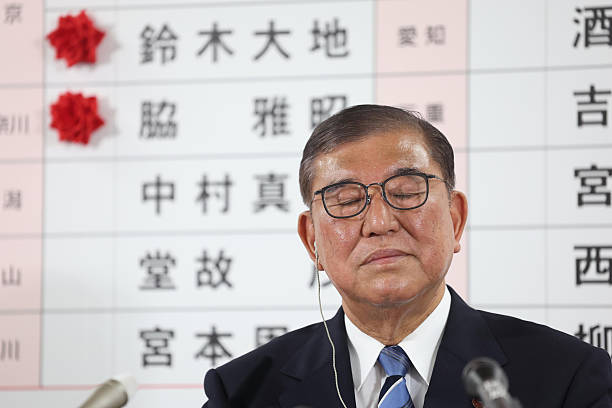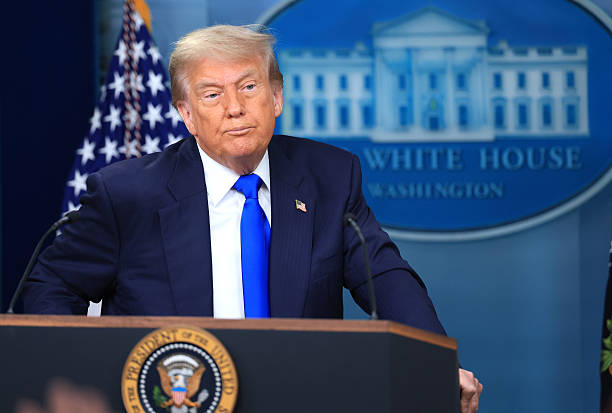Japan’s Ruling Coalition Loses Upper House Majority, Deepening Political Instability
Japanese Prime Minister Shigeru Ishiba’s ruling coalition lost its majority in the upper house, marking a historic political setback and deepening Japan's political instability.
 TOKYO, JAPAN - JULY 20: Prime Minister and ruling Liberal Democratic Party president Shigeru Ishiba attends a press conference after the Upper House election on July 20, 2025 in Tokyo, Japan. (Photo by The Asahi Shimbun via Getty Images)
TOKYO, JAPAN - JULY 20: Prime Minister and ruling Liberal Democratic Party president Shigeru Ishiba attends a press conference after the Upper House election on July 20, 2025 in Tokyo, Japan. (Photo by The Asahi Shimbun via Getty Images)TOKYO (AP) — Japanese Prime Minister Shigeru Ishiba’s ruling coalition failed to secure a majority in the 248-seat upper house in a crucial parliamentary election, NHK public television reported Monday, further destabilizing the government after a prior lower house loss and increasing pressure on Ishiba’s leadership. Ishiba’s Liberal Democratic Party (LDP) and its junior coalition partner Komeito needed 50 additional seats to maintain their majority, having previously held 75, but secured only 47 with one seat remaining to be decided. This marks the first time since its founding in 1955 that the LDP has lost majorities in both houses of parliament, signaling a historic political setback.
Despite the loss, Ishiba declared his intention to remain in office, citing the need to avoid a political vacuum amid mounting domestic and international challenges, including U.S. trade pressure. He vowed to “fulfill my responsibility as head of the No. 1 party and work for the country,” but faces potential calls from within his own party to resign or seek a new coalition partner. Exit polls, released moments after voting closed Sunday night, showed disappointing results for the ruling coalition. The LDP won 39 seats, more than predicted but insufficient for a majority. Ishiba attributed the poor performance to the slow impact of his economic measures amid rising prices and stagnant wages.
Although the upper house lacks the authority to issue a no-confidence vote, the coalition’s defeat will intensify political uncertainty and scrutiny of Ishiba’s leadership. The electorate's frustration stems from economic hardship, including surging living costs and social security burdens. Immigration policy also became a major campaign issue, with right-wing populist parties gaining momentum on platforms of stricter foreign resident regulations. The populist Sanseito party, advocating anti-vaccine, anti-globalism, and traditional gender roles, expanded dramatically to 14 seats from just one, while the conservative opposition Democratic Party for the People (DPP) rose to 17 seats from four. The centrist Constitutional Democratic Party of Japan (CDPJ) remained stagnant.
Opposition leaders rejected the possibility of joining the governing coalition. CDPJ leader Yoshihiko Noda called for an alliance among opposition parties, stating that voters had clearly rejected the Ishiba administration. The election followed the coalition’s loss of its lower house majority in October, spurred by corruption scandals and unpopular policies. Ishiba’s administration has struggled to push legislation, with key economic reforms stalling and pressure mounting from Washington over slow trade negotiations and limited access for U.S. goods, particularly automobiles and rice. A threatened 25% tariff from the U.S., set to begin August 1, adds urgency to Japan’s trade policy challenges.
The fragmented opposition has failed to unify, but the election saw the public turn away from traditional parties toward emerging populists. The spread of xenophobic rhetoric during the campaign sparked protests from human rights groups and concerns among Japan’s foreign residents. Voters expressed mixed sentiments. Yuko Tsuji, 43, said she supported the LDP to avoid further societal division, while Daiichi Nasu, 57, voted for the CDPJ in support of more inclusive immigration and gender policies. The results reflect a nation divided between a desire for stability and the growing appeal of populist change, as Japan grapples with economic pressures and evolving political dynamics.







Conversation